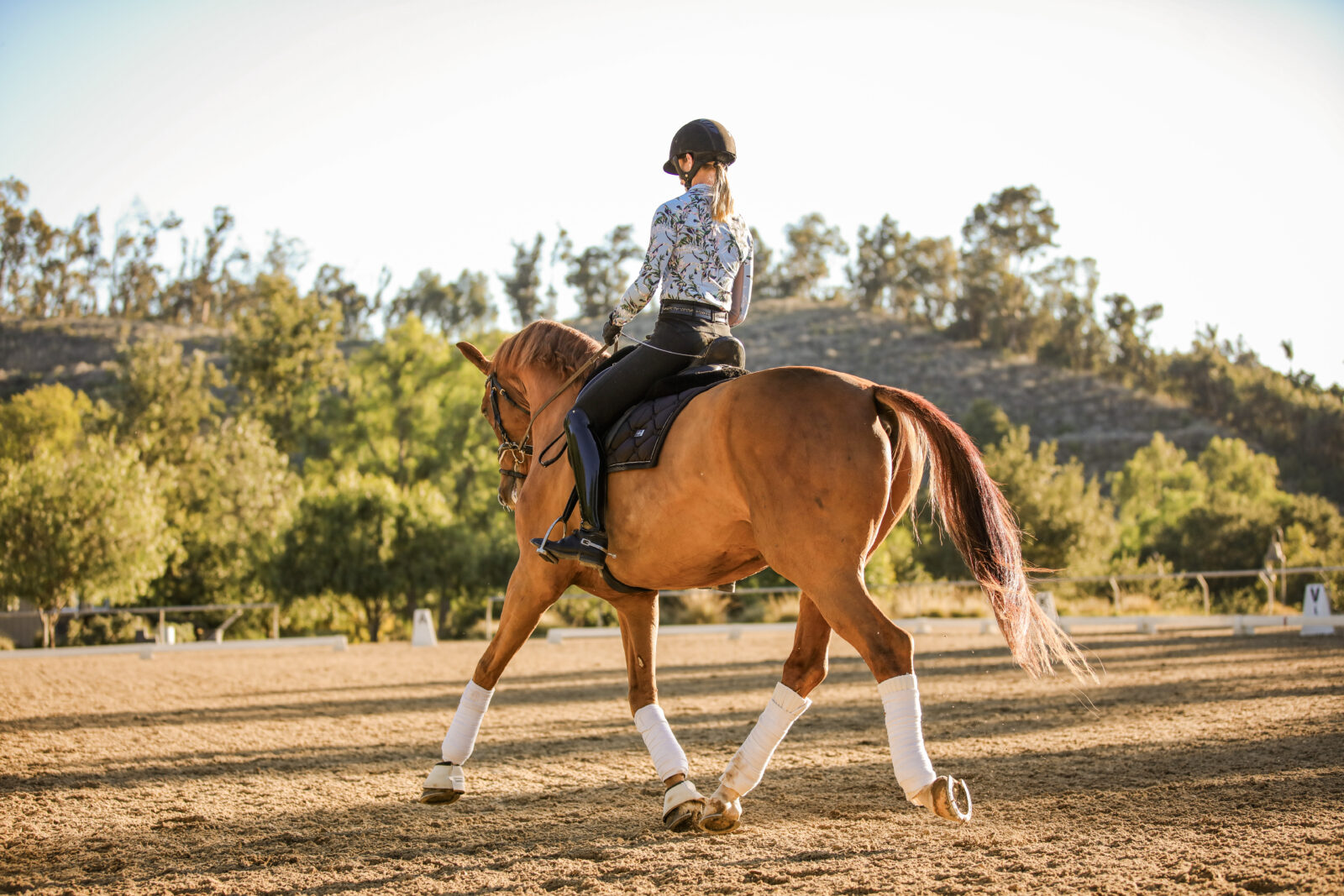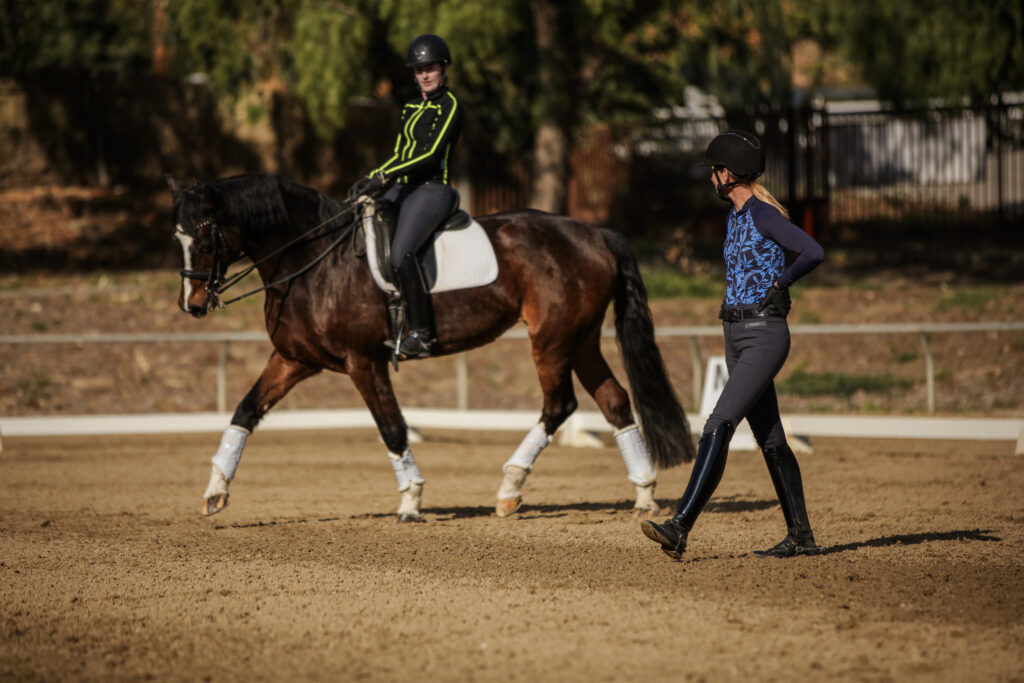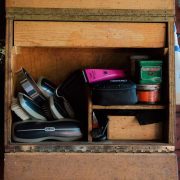How To Prepare For Success In Sitting The Trot

Ever had a riding theory question you couldn’t find the answer to? Or don’t have a go-to coach to ask? In this recurring segment, Amelia Newcomb is here to answer anything about your riding and dressage needs.
Sometimes I feel like when I sit the trot, I am sitting “above” his back, almost like riding a wave instead of being connected “into” his back. How do I find a more stable connection?
“Good question. It can definitely be tricky to find the correct movement of your seat in the sitting trot. If you feel that you are disconnected from your horse’s back in the sitting trot, I would first check in and make sure that your horse is forward and round. When your horse is under tempo and/or has their back dropped, you can’t really sit the trot effectively.
Then, once you have forward and round, check in with your position. Do you have the correct ear, shoulder, hip, heel alignment? Is your seat moving with the trot in the proper motion? In order to have a nice independent seat, with that harmonious connection with your horse’s back, you also need to have the proper alignment so that your center of gravity is in the right place, and be following the motion of the trot correctly with your seat.
After you’ve checked that, when you sit the trot, you want to think about lifting and tilting your pelvis with the same beat that you would rise on. So for example, if your horse is bent left, you would normally rise when the inside hind and outside foreleg are rising, and then sit when they come down. In the sitting trot, you want to follow that same motion and lift and tilt your pelvis slightly with the upbeat, then straighten your pelvis back out with the downbeat.
One super common mistake I see riders make is that they aren’t focusing on the rhythm of the trot and simply moving their pelvis trying to absorb the motion. This causes the horse’s back to tense since your movement is disconnected from the horse’s. Just like in the posting trot, you have to get into the rhythm of the swing to properly absorb the movement of the back with your pelvis.

From there, I would really focus on quality over quantity. If you feel that you are getting disconnected, go posting for a few strides, refresh the trot, and check in with your position. Then try sitting the trot again. As soon as you feel yourself begin to fall apart, go posting, take a break, and check in with your horse and your position. At first, you may only be able to sit a few strides or a partial circle well. That is okay! The more you practice sitting the trot correctly, the faster you’ll improve and you’ll find that connected feeling more and more each ride. I hope this helps you and your horse! Check out my Free Before the Sitting Trot PDF where I go over more of the prerequisites for a good sitting trot.”
Want to explore this topic further? Try these:
Before The Sitting Trot: 5 Exercises To Do Before Sitting The Trot
Which Muscles Should You Use For Riding?
Alignment: Your Key to Stability and Security in the Saddle
Amelia Newcomb is a USDF Gold medalist. Based in Somis, California, she incorporates complete dressage training from starting the young horse through the FEI levels in both her in person and online programs. Amelia works to develop a trusting and confident relationship between horse and rider. Her approach incorporates all aspects of horsemanship from basic groundwork to advanced dressage movements. Amelia’s mantra has always been “Dressage for All”, which is evident in both her in person and online coaching. With a successful YouTube video library of hundreds of free educational videos, over 220,000 subscribers (and counting!), and thousands of students enrolled in her online USDF accredited courses.


